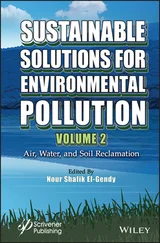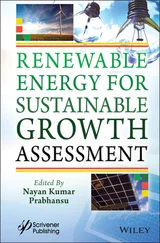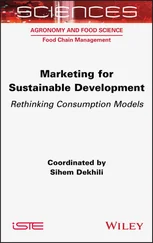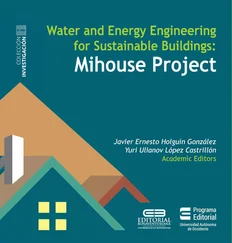Subsequently, a related study was conducted by Giro et al. [116] using B. subtilis LAMI005, where they reported that after 48 hours of fermentation, the highest amount of surfactin was 123 mg/l with clarified cashew apple juice. The production levels were, however, two times smaller than those of mineral media enriched with glucose 10 g/l and fructose 8.7 g/l. The CMC value of biosurfactant from cashew apple juice was 2.5 times lower than that of the CMC value of biosurfactant derived from glucose and fructose media, indicating an increase in efficiency of biosurfactant. These results suggest that cashew apple juice can be used as an appropriate substrate for the production of biosurfactants using B. subtilis LAMI005 and may be used as a rich source of carbon for large‐scale industrial production.
3.6.4 Starch‐Rich Byproduct from the Industry for Biosurfactant Production
High volumes of effluents, extremely rich in starch and cellulose, are generated during the commercial extraction of starch using various staple crops like maize, rice, cassava, wheat, and potato, which could be utilized as a growth medium to produce different products like surfactins [76, 117, 118]. Potato waste, for example, comprises 16–20% of starchy material, 2–2.5% of proteins, 1–1.8% of fibers, and 0.15% of fatty acids. It was earlier reported [119] that potato with surface skin contains elevated potassium, B complex vitamins and vitamin C, and minerals like P, Mg, and Fe.
Thompson et al. [120] examined potato waste as a possible source of carbon in shake flask culture to produce biosurfactants using B. subtilis ATCC‐21332. They evaluated different potato‐based fermentation media for biosurfactant production, which includes defined potato media, liquefied and solid potato waste media, synthetically made starchy medium by the addition of pure starch in mineral media. In a solid medium, the surface tension decreased from 71.3 to 28.3 mN/m, and CMC 100 mg/l was reported when only 60 g/l of potato substrate was used for microbial cultivation, without adding any other nutrient in the fermentation medium. They also examined the surfactin synthesis by using B. subtilis 21332 strain in a medium containing potato industrial effluent with 16.2 and 6.5 g/l of potato solid components. The potato effluent was diluted at 1 : 10 by adding minerals and corn steep liquor to the modified and unmodified media. Surfactin produced using small potato solids showed a better production of biosurfactants with a production concentration of 0.44 g/l than that of large potato solids. Thompson et al. [120] and Noah et al. [76] demonstrated the usage of corn steep liquor for surfactin production. Noah et al. [76] subsequently produced surfactin with a low‐solid potato effluent with the same microbial strain in batch‐mode operated chemostat and recorded ~0.8–0.9 g/l production after 52 h of fermentation. Another study conducted by Das and Mukherjee [121] documented the production of lipopeptides using B. subtilis DM03 and DM04 strain with 5 g potato peel waste under solid‐state fermentation and 2% w/v substratum in submerged fermentation. During fermentation, the production of lipopeptide by B. subtilis DM‐03 was reported with 80 and 67 mg/g in submerged and solid‐state fermentation, respectively.
Wang et al. [122] used B. subtilis B6–1 for fengycin and poly‐β‐glutamic acid(α‐PGA) production by incorporating 5 g/l of soy curd and 5 g/l of sweet potato residue in solid‐state fermentation. The quantity of lipopeptide was reached at the maximum level after 54 hours of incubation; however, the highest amount of γ‐PGA (3.63%) was achieved after 42 hours of incubation. The researchers also emphasized the potential use of these lipopeptides as a biocontrol agent and fertilizer synergists.
Cassava wastewater is another extremely rich carbohydrate waste used for biosurfactant production [123, 124]. The Bacillus sp. strain LB5a produced biosurfactants from cassava wastewater [125]. The results of a Nitschke and Pastore [126] study showed that bacteria were able to grow and yield biosurfactants in both solid and liquid medium, but the best results were reported in broth medium with the surface tension of 26.6 mN/m. They also examined the efficiency of B. subtilis ATCC 21332 and B. subtilis LB5a for biosurfactant production using cassava wastewater in another study. B. subtilis LB5a lowered the medium surface tension up to 26 mN/m with 3.0 g/l of biosurfactant, while the strain ATCC‐21332 produced crude biosurfactant (2.2 g/l) and changed medium surface tension up to 25.9 mN/m [127, 128]. The above studies emphasized the potential use of starchy byproducts and associated carbon sources for synthesis of biosurfactants. The potential of starch‐rich waste as a carbon source for the production of biosurfactants and some other useful products is promising; however, multidisciplinary collaborative research is needed to meet the industrial needs in terms of product quantity and quality.
3.6.5 Biosurfactant Synthesis from Lignocellulosic Industrial Byproducts
Lignocellulosic substances comprise cellulose, lignin, and hemicellulose. The paper industry primarily utilizes cellulose from lignocellulose and applies a variety of techniques to eliminate certain fiber elements (such as hemicellulose and lignin), as a result of which these other elements remain, more often than not, unused, thus becoming waste products. Furthermore, in bioethanol research, various pretreatment techniques are used to extract cellulose for fermentation, with very little attention paid to hemicellulose and lignin. Such pretreatment technologies are, therefore, only midway to becoming primary methods of refining lignocellulosic materials, and only realize the use of one or two key elements, whereas other contents are wasted [35, 129, 130]. Portilla‐Rivera et al. [131] examined Lactobacillus pentosus 's ability for biosurfactant and lactic acid production in fermentation medium composed with 10.0 g/l of the byproduct of corn wet‐milling, 10 g/l of yeast extract, and hydrolyzed pomace (10.8% cellulose, 11.2% hemicellulose, and 51% lignin). They obtained 5.5 g/l of lactic acid and 4.8 mg/l of cell‐bound biosurfactant. In a subsequent study, the sustainability and emulsification of biosurfactants obtained from L. pentosus from distilled pomace hydrolysates, walnut, and hazelnut shell‐based fermentation media were also examined by Portilla‐Rivera et al. [131]. The emulsion density reported was 14.1% for gasoline and 27.2% for kerosene, which was higher than those produced for industrial surfactin. Cortés‐Camargo et al. [132] used the ZSB10 strain of Bacillus tequilensis , separated from Mexican brine, for intracellular and extracellular biosurfactant production. Their findings revealed that the extracellular biosurfactant production using lignocellulosic waste was 1.52 g/l with a surface tension reduction of 38.6 mN/m and 177.0 mg/l CMC value. The intracellular biosurfactant produced was only 0.078 g/l in quantity and exhibited a lesser EI (41%) than an extracellular EI (47%). Jokari and group [133] reported the impact of aeration levels on B. subtilis ATCC 6633 growth and the amount of biosurfactant produced in a miniaturized bioreactor ventilated flask. In the ideal conditions where the filling and shaking rates were 15 ml and 300 rpm, the maximum biosurfactant content (0.0485 g/l/h) was achieved. Their findings indicated the noticeable increase in surfactin productivity under environments that were not oxygen‐limiting.
These studies have shown that lignocellulosic compounds and waste products could be considered as raw materials for the production of biosurfactants due to their low processing costs and higher nutrient quality. The results of these studies also show that lignocellulosic waste can be a potential carbon source for fermentation. The biosurfactant synthesis of these industrial byproducts offers a promising financial advantage that can be used to achieve cost savings over the production of synthetic surfactants.
Читать дальше












